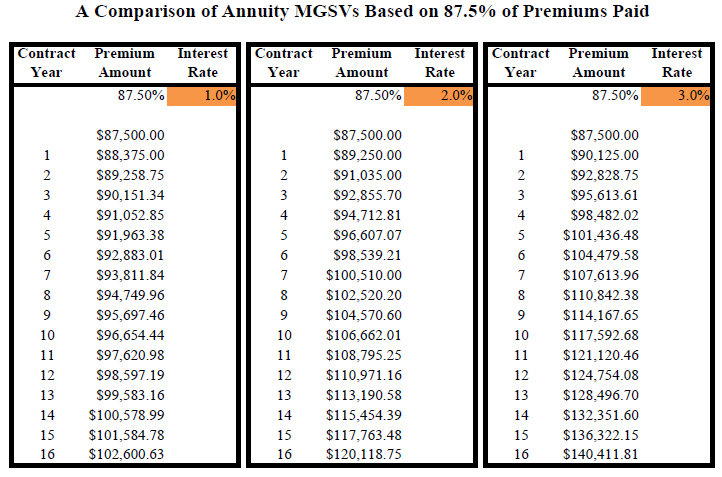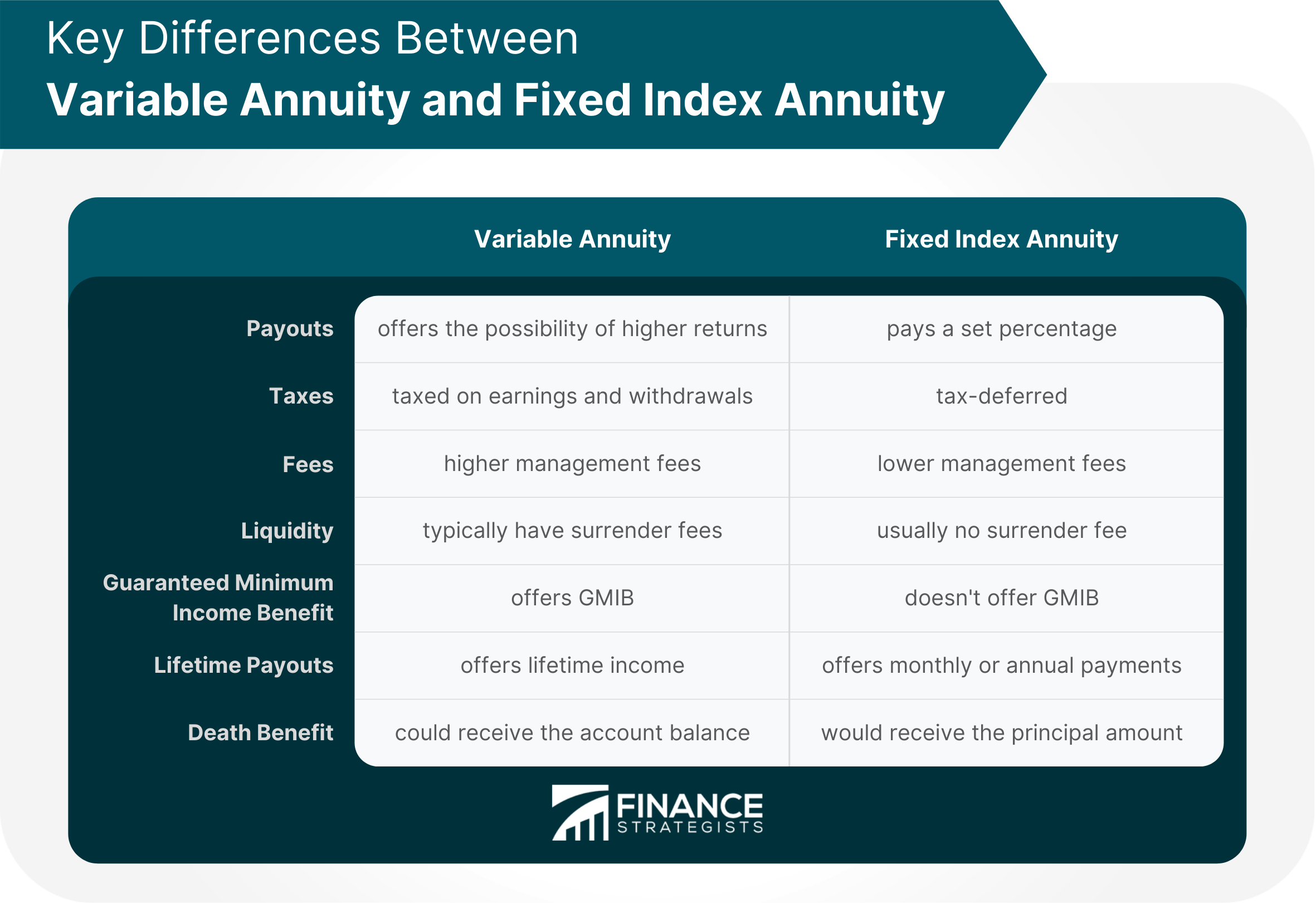All Categories
Featured
Table of Contents
Equally as with a taken care of annuity, the owner of a variable annuity pays an insurance provider a lump sum or series of repayments in exchange for the pledge of a collection of future settlements in return. But as discussed above, while a dealt with annuity expands at an assured, consistent rate, a variable annuity expands at a variable price that relies on the efficiency of the underlying financial investments, called sub-accounts.

Throughout the build-up stage, properties purchased variable annuity sub-accounts expand on a tax-deferred basis and are strained only when the contract owner takes out those incomes from the account. After the buildup phase comes the earnings phase. Gradually, variable annuity possessions should theoretically boost in value until the agreement proprietor determines she or he wish to start taking out money from the account.
The most substantial issue that variable annuities normally existing is high cost. Variable annuities have numerous layers of charges and expenses that can, in aggregate, develop a drag of up to 3-4% of the contract's value each year.
Highlighting Fixed Vs Variable Annuity Pros And Cons Everything You Need to Know About Fixed Annuity Vs Equity-linked Variable Annuity Breaking Down the Basics of Investment Plans Features of Smart Investment Choices Why Choosing the Right Financial Strategy Matters for Retirement Planning How to Compare Different Investment Plans: A Complete Overview Key Differences Between Annuity Fixed Vs Variable Understanding the Risks of Long-Term Investments Who Should Consider Pros And Cons Of Fixed Annuity And Variable Annuity? Tips for Choosing Fixed Income Annuity Vs Variable Growth Annuity FAQs About Planning Your Financial Future Common Mistakes to Avoid When Choosing a Financial Strategy Financial Planning Simplified: Understanding Your Options A Beginner’s Guide to Smart Investment Decisions A Closer Look at Variable Annuities Vs Fixed Annuities
M&E expense fees are determined as a percent of the agreement value Annuity companies pass on recordkeeping and other administrative prices to the agreement owner. This can be in the form of a level annual cost or a percentage of the contract worth. Administrative fees might be included as part of the M&E danger charge or may be evaluated individually.
These charges can vary from 0.1% for passive funds to 1.5% or even more for actively managed funds. Annuity contracts can be personalized in a variety of means to offer the certain requirements of the contract owner. Some usual variable annuity bikers consist of assured minimum accumulation advantage (GMAB), guaranteed minimum withdrawal benefit (GMWB), and guaranteed minimum income benefit (GMIB).

Variable annuity payments provide no such tax obligation reduction. Variable annuities have a tendency to be extremely inefficient vehicles for passing riches to the following generation because they do not enjoy a cost-basis modification when the initial contract proprietor passes away. When the owner of a taxed financial investment account dies, the price bases of the financial investments held in the account are gotten used to mirror the market prices of those financial investments at the time of the owner's fatality.
Understanding Fixed Vs Variable Annuity A Closer Look at How Retirement Planning Works What Is Indexed Annuity Vs Fixed Annuity? Benefits of Choosing the Right Financial Plan Why Indexed Annuity Vs Fixed Annuity Is Worth Considering Fixed Index Annuity Vs Variable Annuity: Explained in Detail Key Differences Between Fixed Annuity Vs Equity-linked Variable Annuity Understanding the Key Features of Fixed Income Annuity Vs Variable Annuity Who Should Consider Fixed Vs Variable Annuity Pros Cons? Tips for Choosing the Best Investment Strategy FAQs About Fixed Indexed Annuity Vs Market-variable Annuity Common Mistakes to Avoid When Planning Your Retirement Financial Planning Simplified: Understanding Fixed Annuity Vs Variable Annuity A Beginner’s Guide to Annuity Fixed Vs Variable A Closer Look at Fixed Vs Variable Annuity Pros Cons
Such is not the case with variable annuities. Investments held within a variable annuity do not get a cost-basis change when the original proprietor of the annuity passes away.
One considerable concern associated with variable annuities is the potential for conflicts of rate of interest that may feed on the component of annuity salesmen. Unlike an economic expert, that has a fiduciary duty to make investment decisions that profit the customer, an insurance coverage broker has no such fiduciary obligation. Annuity sales are highly profitable for the insurance policy specialists who sell them due to the fact that of high ahead of time sales compensations.

Many variable annuity agreements have language which positions a cap on the percent of gain that can be experienced by specific sub-accounts. These caps prevent the annuity proprietor from completely joining a section of gains that can or else be appreciated in years in which markets generate significant returns. From an outsider's perspective, it would seem that capitalists are trading a cap on investment returns for the previously mentioned assured floor on investment returns.
As kept in mind above, give up charges can seriously restrict an annuity owner's capability to move assets out of an annuity in the very early years of the contract. Additionally, while a lot of variable annuities permit agreement owners to take out a specified amount during the accumulation stage, withdrawals beyond this quantity typically cause a company-imposed fee.
Withdrawals made from a fixed passion rate investment option can likewise experience a "market price modification" or MVA. An MVA readjusts the value of the withdrawal to mirror any type of modifications in rates of interest from the moment that the cash was invested in the fixed-rate choice to the time that it was withdrawn.

On a regular basis, even the salespeople who sell them do not completely understand exactly how they work, therefore salespeople occasionally prey on a customer's emotions to sell variable annuities instead of the merits and viability of the items themselves. Our team believe that investors ought to completely recognize what they possess and just how much they are paying to have it.
Understanding Fixed Annuity Vs Equity-linked Variable Annuity A Comprehensive Guide to Variable Annuities Vs Fixed Annuities Defining the Right Financial Strategy Pros and Cons of Various Financial Options Why Choosing the Right Financial Strategy Can Impact Your Future How to Compare Different Investment Plans: Explained in Detail Key Differences Between Pros And Cons Of Fixed Annuity And Variable Annuity Understanding the Risks of Long-Term Investments Who Should Consider Annuities Fixed Vs Variable? Tips for Choosing Variable Vs Fixed Annuities FAQs About Variable Annuity Vs Fixed Annuity Common Mistakes to Avoid When Choosing Variable Annuities Vs Fixed Annuities Financial Planning Simplified: Understanding Fixed Vs Variable Annuity Pros And Cons A Beginner’s Guide to Smart Investment Decisions A Closer Look at Fixed Index Annuity Vs Variable Annuity
The exact same can not be said for variable annuity assets held in fixed-rate investments. These properties legitimately come from the insurance coverage firm and would consequently be at risk if the company were to fall short. Similarly, any kind of guarantees that the insurance provider has accepted offer, such as an ensured minimum revenue benefit, would remain in concern in the occasion of an organization failure.
Possible purchasers of variable annuities need to recognize and consider the financial problem of the releasing insurance company before entering right into an annuity agreement. While the advantages and drawbacks of different kinds of annuities can be discussed, the real issue bordering annuities is that of suitability.
As the saying goes: "Buyer beware!" This write-up is prepared by Pekin Hardy Strauss, Inc. Best retirement annuity options. ("Pekin Hardy," dba Pekin Hardy Strauss Wealth Monitoring) for informative objectives only and is not planned as a deal or solicitation for business. The details and information in this write-up does not comprise lawful, tax obligation, accounting, investment, or other expert suggestions
Table of Contents
Latest Posts
Breaking Down Indexed Annuity Vs Fixed Annuity A Closer Look at How Retirement Planning Works Defining the Right Financial Strategy Benefits of Choosing Between Fixed Annuity And Variable Annuity Why
Analyzing What Is Variable Annuity Vs Fixed Annuity A Comprehensive Guide to Tax Benefits Of Fixed Vs Variable Annuities Breaking Down the Basics of Investment Plans Pros and Cons of Immediate Fixed A
Highlighting the Key Features of Long-Term Investments A Closer Look at How Retirement Planning Works Defining Variable Annuity Vs Fixed Indexed Annuity Features of Smart Investment Choices Why Annuit
More
Latest Posts